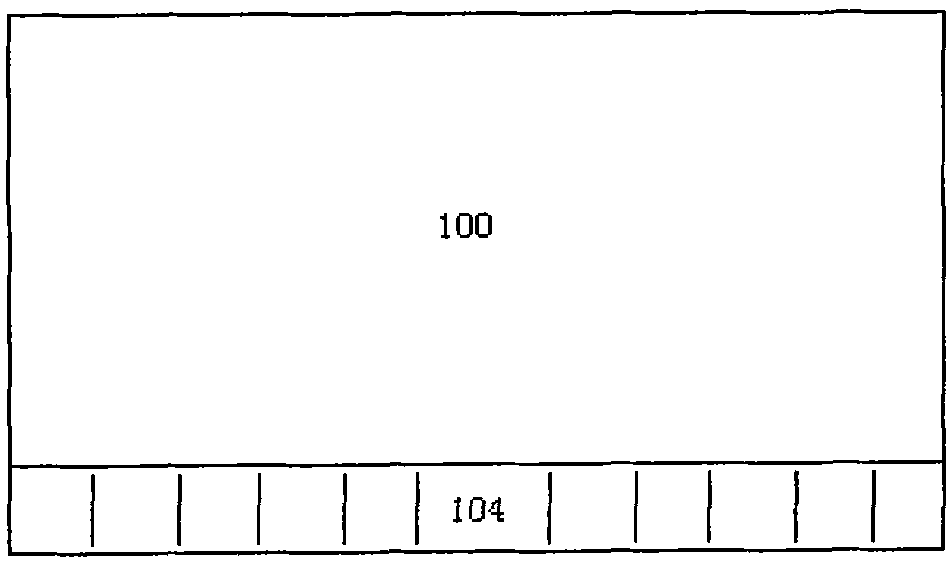Preparation method of silicon-based dielectric film
A dielectric film and silicon-based technology, applied in the field of SiN thin film preparation, can solve the problems of the Ag gate line of the battery being difficult to penetrate, the cost is high, and it is not suitable for the anti-reflection layer of the battery structure, so as to solve the problem of decreased battery efficiency and consistent interface. good effect
- Summary
- Abstract
- Description
- Claims
- Application Information
AI Technical Summary
Problems solved by technology
Method used
Image
Examples
Embodiment 1
[0038] 1. Prepare N-type silicon wafers, go through the texturing process, wash with ultra-pure water and dry them;
[0039] 2. Screen-print Al paste on the silicon wafer prepared in step 1, and then sinter in a sintering furnace with a peak sintering temperature of 820°C for 8s;
[0040] 3. Cut the silicon chip obtained in step 2 into several small pieces, put into a hydrochloric acid solution with a mass concentration of 37% and boil for 5 minutes to remove the Al layer and the Al-Si alloy layer of the silicon chip; then take out the silicon chip, and use Cleaning with ultrapure water and drying to obtain an Al-doped P+ layer, that is, an effective doped layer;
[0041] 4. Etch the silicon wafer prepared in step 3 in a potassium hydroxide solution with a mass concentration of 12% and a temperature of 55°C for 3 minutes to clean the surface traces of the silicon wafer to obtain an Al-doped P+ inner layer, that is, an effective doped layer inner layer;
[0042] 5. Prepare hy...
Embodiment 2
[0046] 1. Prepare P-type silicon wafers, wash and dry them according to standard RCA cleaning steps;
[0047] 2. Screen-print Al paste on the silicon wafer prepared in step 1, and then sinter in a sintering furnace. The sintering peak temperature is 1050°C and the time is 2s;
[0048] 3. Cut the silicon chip obtained in step 2 into several small pieces, put it into 10% phosphoric acid solution and react at room temperature for 10 minutes, remove the Al layer and the Al-Si alloy layer of the silicon chip; then take out the silicon chip, and use ultra-pure Wash with water and dry to obtain the P+ layer (effectively doped layer) doped with Al;
[0049] 4. Prepare hydrazine: ammonia gas: propylene glycol in a weight ratio of 1:4:20, and use it as a conductive solution for the anode nitriding process. Wherein the propylene glycol of 20 unit weights is extraction agent, and hydrazine is solvent;
[0050] 5. Place the silicon wafer prepared in step 3 on the anode end of the electro...
Embodiment 3
[0053] 1. Prepare N-type silicon wafers, go through the texturing process, wash with ultra-pure water and dry, and use PECVD to prepare a layer of silicon nitride film;
[0054] 2. Screen-print Al slurry that can ablate silicon nitride on the silicon wafer prepared in step 1, and then sinter the silicon wafer in a sintering furnace with a peak temperature of 600°C for 2 minutes;
[0055] 3, cut the silicon chip that step 2 makes into several small pieces, put into the hydrochloric acid solution of mass fraction 10%, boil 30min, remove the Al layer and Al-Si alloy layer of described silicon chip; Take out silicon chip then, use super Washing with pure water, blowing dry, obtain the P+ layer doped with Al, namely effective doping layer);
[0056] 4. Etch the silicon wafer prepared in step 3 in a potassium hydroxide solution with a mass concentration of 15% and a temperature of 55°C for 20 seconds to clean the surface traces of the silicon wafer to obtain an Al-doped P+ inner lay...
PUM
 Login to View More
Login to View More Abstract
Description
Claims
Application Information
 Login to View More
Login to View More - R&D
- Intellectual Property
- Life Sciences
- Materials
- Tech Scout
- Unparalleled Data Quality
- Higher Quality Content
- 60% Fewer Hallucinations
Browse by: Latest US Patents, China's latest patents, Technical Efficacy Thesaurus, Application Domain, Technology Topic, Popular Technical Reports.
© 2025 PatSnap. All rights reserved.Legal|Privacy policy|Modern Slavery Act Transparency Statement|Sitemap|About US| Contact US: help@patsnap.com



